The kids have a new slang term, and it’s a rare one I approve of, because the dictionary defines it as an “adjective used approvingly to describe someone who projects a lack of concern about how others feel about their actions or opinions; or to describe a thing perceived as both bold and commendable, especially if it challenges or flouts convention in some way” – and I’m very fond of such people and things.
And if anyone or anything in the car industry is ‘based’, it’s Mazda. Who else but the Hiroshima firm would persevere with affordable sports cars; resist turbocharging its smaller petrol engines in the name of driver involvement; invent spark-compression ignition as an alternative; enter the EV era with a cork-lined, rear-hinged-doored, short-range hatchback; respond to slow sales of said EV by reviving the rotary engine to serve as a range-extending generator; or design an all-new diesel straight six a decade after Dieselgate?
Mazda’s people are mad lads, and I love them for it. Few mavericks evade convention forever, though, and lately we have seen Mazda launch loads of SUVs, develop a PHEV powertrain and even rebody a Chinese brand’s EV for European sale.
On occasion, I wondered whether Mazda was conforming wholeheartedly or with a slight reluctance or resignation. I got the latter impression when driving the early CX-60 PHEV that we had on our fleet in 2023: frankly, it felt unfinished, with its powertrain often shunting and its suspension always clattering.
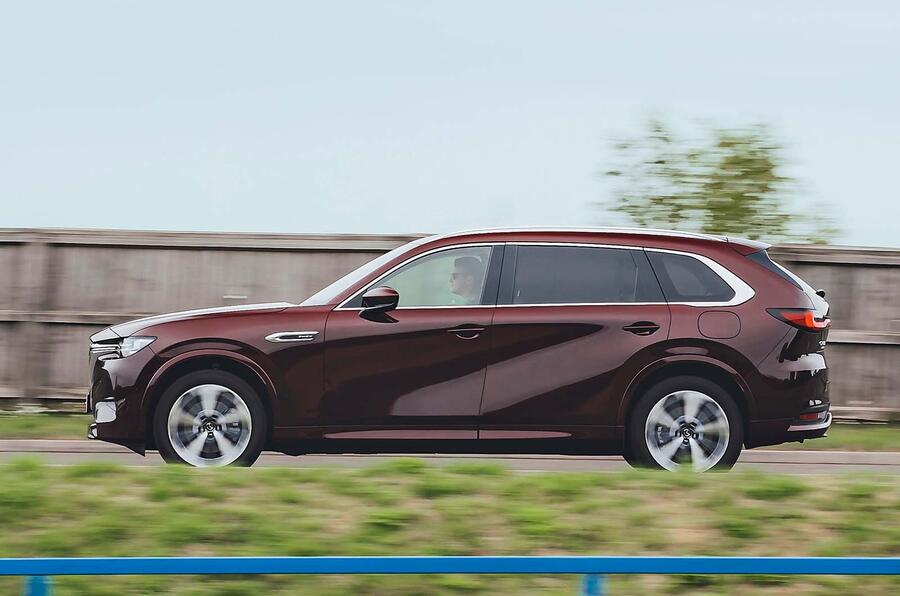
So the big question here concerns how much Mazda improved things before launching this stretched, seven-seat version of that car, this here CX-80. Its engineers certainly aren’t incorrigible: they accepted the negative feedback from us and customers seriously and revised the CX-60.
But launching a large SUV is as far from ‘based’ a car maker can get nowadays. So even if it is objectively better than the CX-60, can the CX-80 really feel like a true Mazda?
Well, it certainly looks the part in our car’s specification. Mazda’s paints are among the finest in the business, and its interiors have real individuality to them.
The cabin design puts me in mind of the 3 hatchback that I relished running six years ago, with its modest digital instrument display and unintrusive infotainment touchscreen – which becomes just a regular screen on the move, as the system forces you to use a large, physical control dial instead in the name of safety.
Actually, this interior is better than my 3’s, because that was all-black, whereas here Takumi trim provides a heartening combination of cream leather upholstery, light-coloured wood inserts and a curious dashboard material that reminds me of the cast when I broke my wrist.
Mazda offers variety mainly through five trim levels (Takumi is the middle one) rather than options, unlike most other manufacturers, so there’s only one ‘pack’ to tell you about here: the Convenience and Driver Assistance Pack, at £1950.
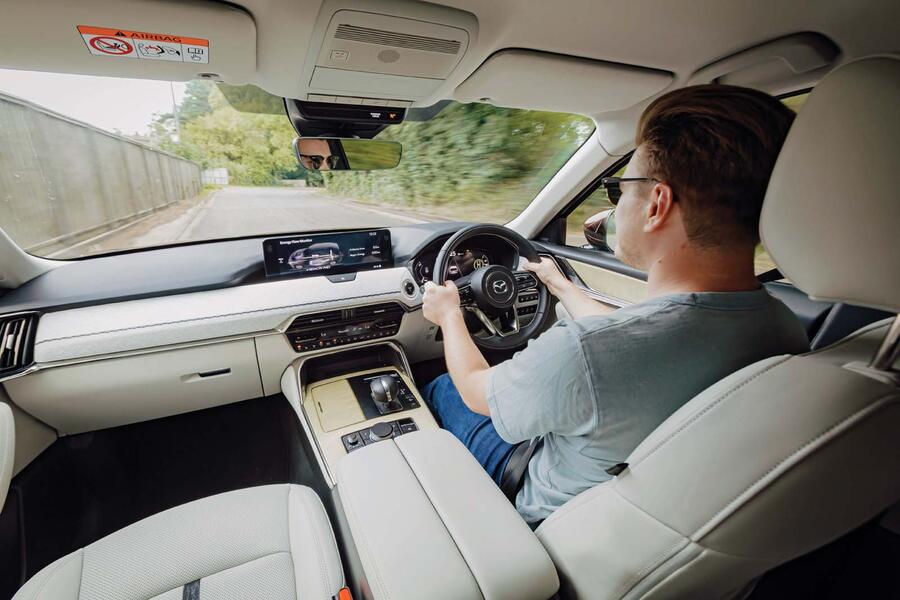
And frankly I’d avoid it, because it comprises mostly ADAS features, and one of those is quite enough.
You can order the CX-80 with that new 251bhp 3.3-litre diesel straight six, which many here at Autocar fantasise about, but a diesel is virtually irrelevant now – in contrast to the 323bhp PHEV version that we’ve chosen instead.
With its 2.5-litre four-cylinder petrol engine (yes, still naturally aspirated!), chunky 17.8kWh battery and electric motor combining for 177mpg, 35g/km of CO2 and 38 miles of electric range, it’s liable for benefit-in-kind tax of just 13%, as opposed to 37%.
The slight issue here is that I can’t charge at home – really only when there’s a charger free at the office or when I visit my EV-owning parents. But this is a pretty common position for a company car user to be in, such are the tax rules, so it will be informative to discover how well and how efficiently this PHEV operates when a charge is a weekly treat rather than a daily meal.
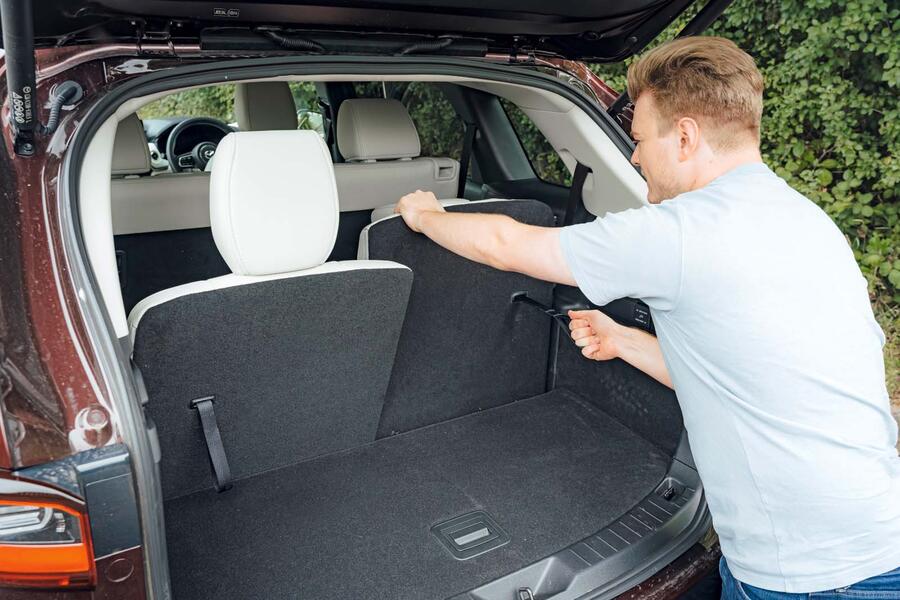
I also need to consider whether the CX-80 will appeal to such user-choosers when similar models are offered by Mercedes, BMW, Volvo and more. Can a Mazda really cut it in the premium large SUV market?
Update 2
With summer fast fading away, my mate and I were determined not to waste a sunny Saturday and so decided to get on our bikes.
Slight issue: as online forums soon revealed, I was just one of many cyclists unfortunate enough to experience a jammed through-axle, so I was unable to remove my bike’s front wheel. (Honestly, the creator of this particular one should be banned from designing things.) So this ride might have been over before it had even begun, or at least needed moving to a dull urban route starting at home, as the only boot that had ever accepted such a frame with both wheels attached was a monster truck called Land Cruiser.
Gingerly Ben and I manoeuvred all 29in of the wheel up to the rear of the CX-80. It wasn’t looking good – but after several attempts at careful twisting, we just about squeezed it in. Huge, in both senses of the word.
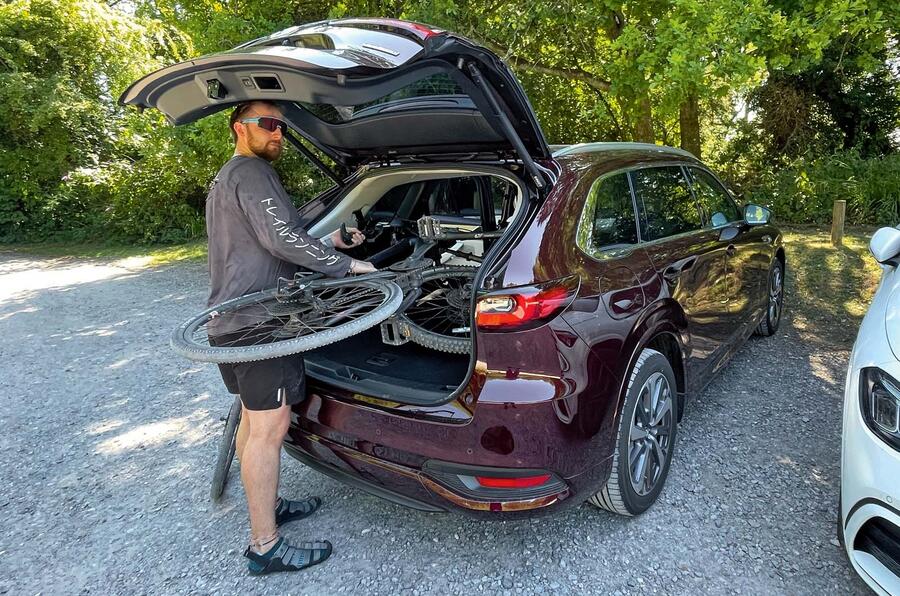
Of course, this was after we had dealt with both the third and second rows of seats. With seven people aboard, there’s a mere 258 litres of luggage space (about what you get in a Hyundai i10), growing to 687 in five-seat mode and ultimately 1971.
This was actually a very easy process. Each third-row seat has a fabric strap on its back that you pull to release the mechanism, after which it can be pushed away.
The middle seats (which are split 60:40, somewhat disappointingly) took me a minute to figure out but make total sense: the handle on the shoulders pulls them forward 45deg to allow third-row entry; the handle on the sides folds them flat; and the bar under the base lets them slide backwards and forwards on rails.
So happily Ben and I got to enjoy our ride on the Downs Link. If you live nearby, I highly recommend it: one of Dr Beeching’s poor victims, it runs between Guildford (Surrey) and Shoreham-by-Sea (Sussex), and the old Christ’s Hospital and West Grinstead stations are still there, signage and all, affording you the cool experience of riding down between the platforms.

At one point, a smiling driver told us we must have been mad, such was the weather. His car can’t have had the benefit of ventilated seats: we quickly stopped being all hot and bothered with the CX-80 blasting freezing air not just into our faces but onto our backs and bums too.
Glorious – as, I imagine, its seat heating would be in winter (yes, I did try to turn both on at once and, no, it doesn’t let you).
There was time left in the day for one more hitch, though. While the boot is largely trimmed in the usual black fabric, the upper sides, upper second-row seatbacks, rear door cards and headlining are all covered in light material – and inevitably we got some dust and dirt on them.
Panicked sponging ensued and all is now back to normal – but, much as I love a bright interior, you would be wise to choose the black option if you’re going to use your SUV for any actual SUV activities.
Update 3
An electric car is now the default for company car drivers, but the next best option in terms of tax liability is a plug-in hybrid – and it’s a major part of the reason for the ongoing PHEV renaissance.
The logic behind the bandings is, of course, rewarding lower CO2 emissions – but unlike with an EV, the carbon footprint of a PHEV is entirely dependent on how you use it. And if you ‘can’t make an EV work for you’, it will be because you regularly do long journeys without time to stop and charge or you can’t access charging at home or at work.
I am one such person. So in an effort to lower my fuel bills and keep my conscience clean, I’ve tried plugging my CX-80 PHEV into a street-side public charger.

Five years ago, when I ran an EV, I was outraged to discover that charging facilities in Brighton and Hove, despite it having the Green Party’s only MP and a Green-led council, were minimal and poor. Matters in my area have improved only slightly since then.
Back then there was a janky 7kW charger and a 50kW one that required a physical card; now the latter is a BP Pulse unit that accepts contactless bank card payments (usually…) and the former has been replaced by a Blink unit that is reliable, controlled by a decent phone app and, according to Zap-Map, dispenses energy at 11kW – three big ticks.
The battery of the CX-80 has a capacity of 17.8kWh, so that BP Pulse charger should be able to fill it in just 20 minutes – except, unlike many premium PHEVs, this one can’t take DC charging, meaning I will have to use the AC slow charger instead. Worse still, that 11kW claim turns out to be wrong: the Blink app states that it actually maxes out at 3.7kW – the same as you would get from a domestic three-pin plug.
Four and a half hours later, my charging session terminated itself after 15.02kWh of energy had been dispensed, at a cost of £6.88 (£1.38 of which was VAT – which people who can charge at home or work avoid).
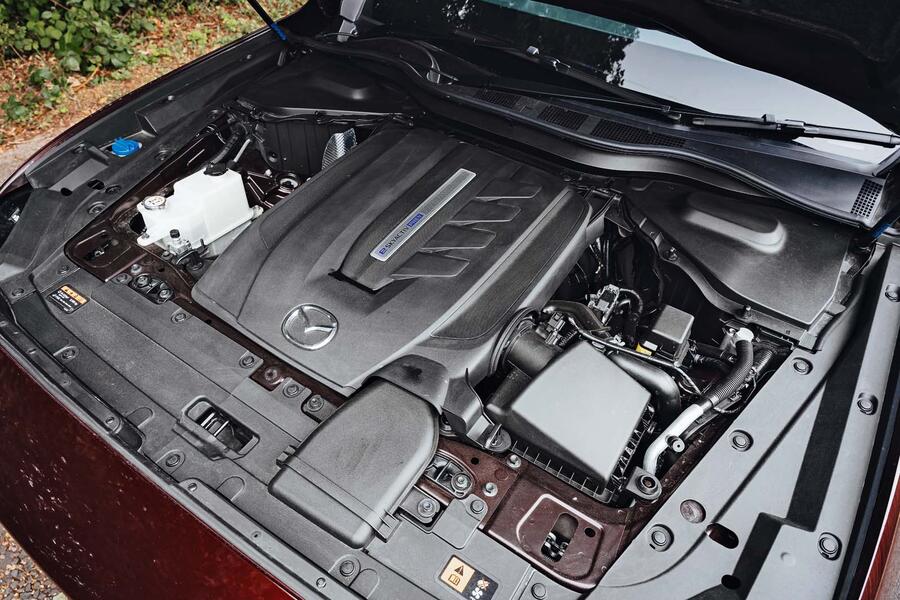
Now, when I was driving on a flat battery, the CX-80 averaged 32mpg – at which rate £6.88 worth of petrol would take me 35 miles. Right, and its official electric-only range is 38 miles, so…
Would you endure the hassle of parking on a random street to charge, walking 20 minutes home, then walking back to the charger four and a half hours later to collect your car, in exchange for a few pennies?
Me neither. In short, unless you can charge at work on the company account or at home on a cheap overnight energy tariff, a PHEV probably won’t make sense.
What a shame, given how nice it was – and how much better for the local environment – to drive the CX-80 around town in smooth silence.
Final report
Let’s start this final report with some unfinished business. While describing the troubles I was having running our plug-in hybrid CX-80 without a home charger (no DC rapid-charging capability, glacial public AC chargers), I promised to go into detail about the pleasure of running it in emissions-free near-silence.
Certainly doing so makes me feel less guilty about clogging up urban streets and air with an enormous gas-guzzler, and it also makes for a smoother, more relaxing driving experience – if also one that’s notably compromised when compared with a legit EV.
A total of 173bhp makes the electric motor sound pretty strong, but it has more than two tonnes of SUV to haul around, so about 40mph is the limit – so long as no steep inclines are involved. And with the battery capacity being a modest 17.8kWh, electric-only range is just 38 miles.
That’s fine for urban duties, of course, but alternative plug-in hybrid SUVs can easily do a short motorway commute on electricity alone, leaving the CX-80 feeling conspicuously outdated.
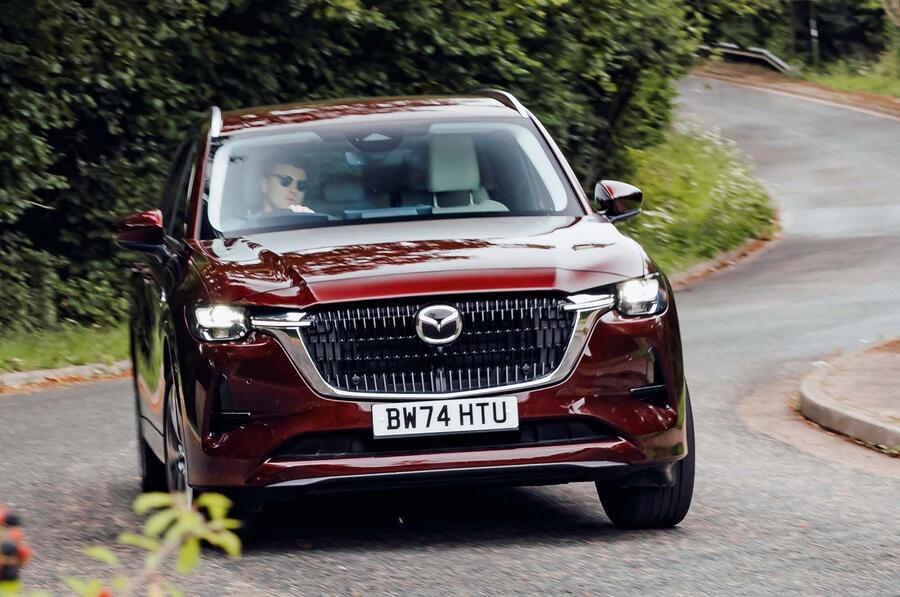
My praise here really is limited to: one, the fact that once I’ve selected EV mode (via a switch on the centre console), the digital power gauge gains a needle representing the point at which the petrol engine will need calling into action; and two, the existence of a button that lets you set a minimum battery charge level for a journey (in increments of 10%, right up to 100%), which the powertrain proved good at obeying.
‘Compromised’ is also the most appropriate word to describe the characteristics of the CX-80’s PHEV powertrain in its standard hybrid mode. The unusually large and naturally aspirated engine, a 2.5-litre four-cylinder petrol unit, has to rev like mad to generate sufficient torque in faster driving. The accompanying growl quickly becomes wearing.
Not as wearing, though, as the regular shunting as the powertrain shifts between its two power sources – an unacceptably unrefined sensation for a £50,000 car to be inflicting on its occupants.
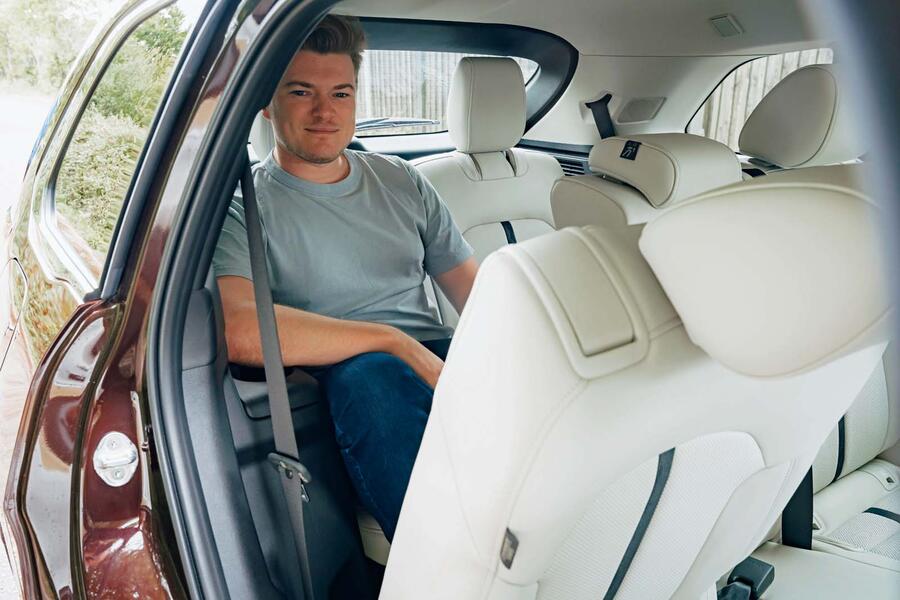
This shortcoming is familiar from the disappointing CX-60 PHEV we ran a few years ago – as is the ride quality, despite a host of upgrades Mazda has made to the suspension since then. Although it would cruise quite comfortably down motorways, my CX-80 could feel dreadful on battered urban road surfaces.
Everybody to whom I gave a lift almost immediately remarked on the slamming through potholes and jostling over uneven sections. This is a heavy car on big wheels, yes, but so is the equivalent XC90 T8, and that is leagues comfier. Maybe the CX-80 is more agile than the Volvo, but what does handling agility really matter to the average buyer of a seven-seat SUV?
Mazda UK’s spreadsheet botherers won’t want to hear this, but the option of a 3.3-litre diesel straight six is the CX-80’s saving grace. This smooth and efficient engine also lightens the load on the suspension by some 100kg, surely making the ride less troublesome.
Honestly, I reckon I could easily have got better fuel economy out of it as well: my overall return from a tank with an empty battery never exceeded 33mpg, and ad hoc top-ups of a few kWh here and there hardly seemed worth the time and expense in retrospect, even if it did notably boost MPG.
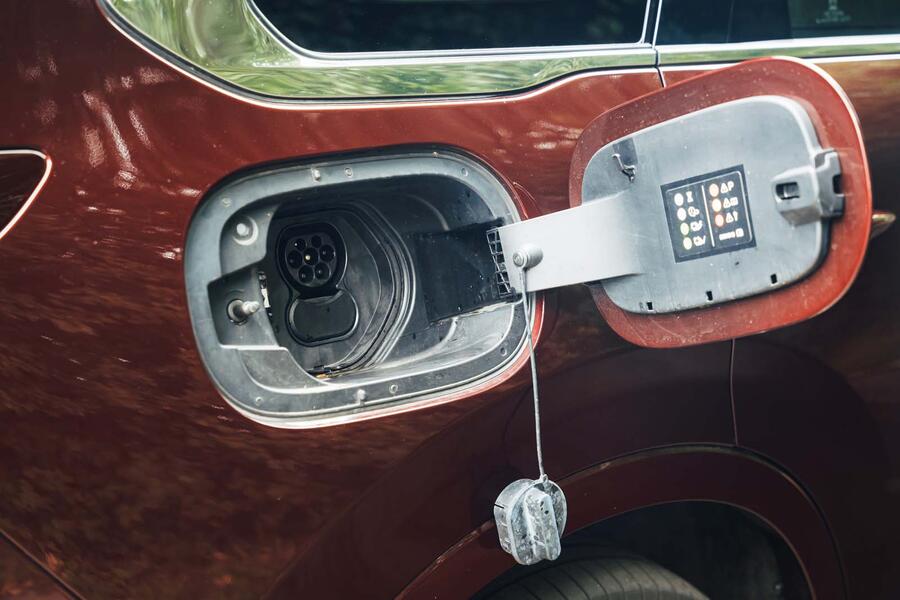
The idea of my car without the electrical gubbins really does appeal, because my criticisms of it are exclusive to the powertrain and suspension: otherwise, the CX-80 is a lovely thing. It looks pretty good for a bus and I found the interior endlessly charming.
The mixture of interesting design and unusual materials, especially when upholstered in the creamy tones we chose, created a calming upmarket ambience. This was furthered by the prevalence of physical switchgear and real digital restraint on the designers’ behalf. (An abundance of pixels can be so taxing on the eyes and the brain.)
And when I did have cause to use the infotainment, it was much less distracting than usual, because the touchscreen was supplemented by a twisting dial and buttons on the centre console. Even BMW has now abandoned this control scheme, but I reckon it’s still among the best solutions yet tried.

The CX-80 was very practical, too – as you would hope from its bay-busting length and width, not to mention its freakish wheelbase. Friends over 6ft tall had loads of head and leg room in the front, while even the third row was big enough for me to sit in without discomfort (at 5ft 8in). And with all five passenger seats folded down, the boot proved vast enough to swallow two full-size bikes with both wheels attached.
Overall, though, running the CX-80 was a frustrating experience. I really wanted to like this car, as a long-standing admirer of Mazda’s maverick attitude, and indeed I enjoyed many aspects of it, but the powertrain and suspension simply didn’t make the grade.
Mazda CX-80 2.5 e-skyactiv PHEV Takumi
Prices: List price new £53,880 List price now £54,180 Price as tested £56,730
Options: Convenience and Driver Assistance Pack £1950, Artisan Red metallic paint £900
Economy and range: Claimed economy 176.6mpg Claimed electric range 38 miles Battery 17.8kWh Test average 39.0mpg Test best 80.0mpg Test worst 31.1mpg Real-world range 493 miles (petrol), na (electric)
Tech Highlights: 0-62mph 6.8sec Top speed 121mph Engine 4 cyls in line, 2488cc, petrol, plus electric motor Max power 323bhp Max torque 369lb ft Gearbox 8-spd automatic, 4WD Boot capacity 566-1971 litres Wheels 20in, alloy Tyres 235/50 R20, Toyo Proxes Sport Kerb weight 2290kg
Service and running costs: Contract hire rate £513 pcm CO2 35g/km Service costs None Other costs Screenwash £14 Fuel costs £662.91 Running costs including fuel £676.91 Cost per mile 17 pence Faults None

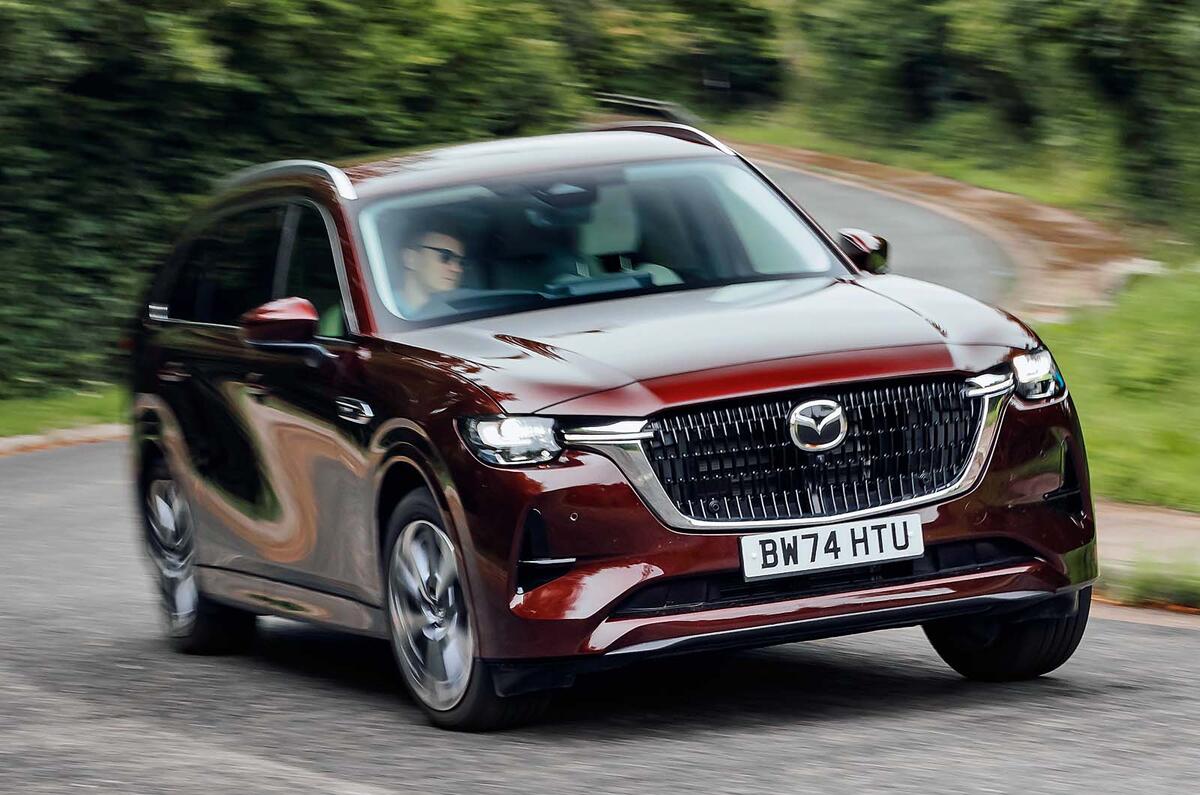


Join the debate
Add your comment
We have just purchased CX-80 for our growing family (from the CX-5) and we did look at the Santa Fe which is more in a similar price bracket, but felt a lot of it was quite cheap inside, and the style wasn't for us. Also 2WD vs the Mazda's 4WD.
It was great to read that it's comfy, the infotainment is good and that it's got space, that's what we're using it for.
I would have liked a bigger battery as well, but again at this price point, you're not going to get that.
177mpg but in the real world 40mpg, another PHEV tax dodging joke.